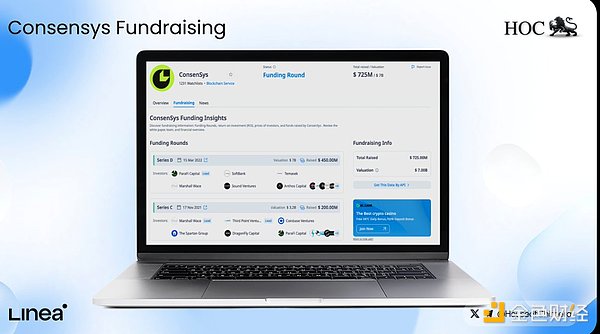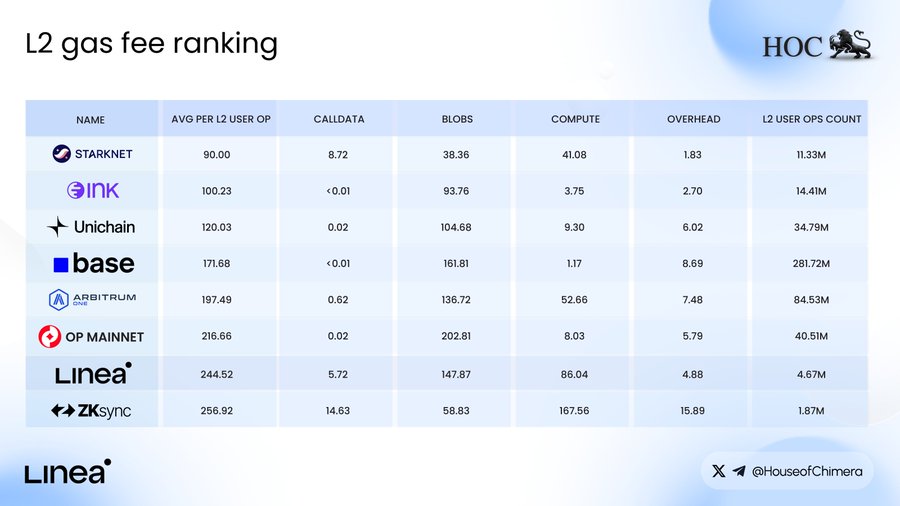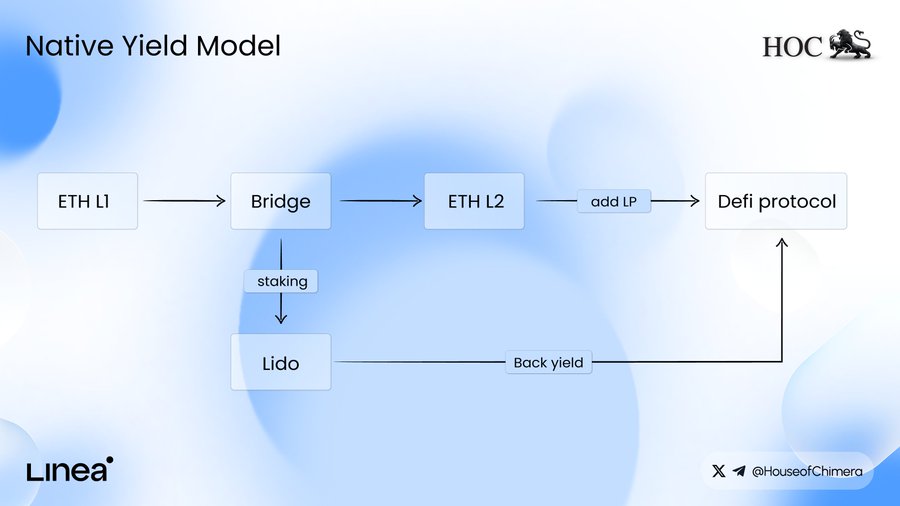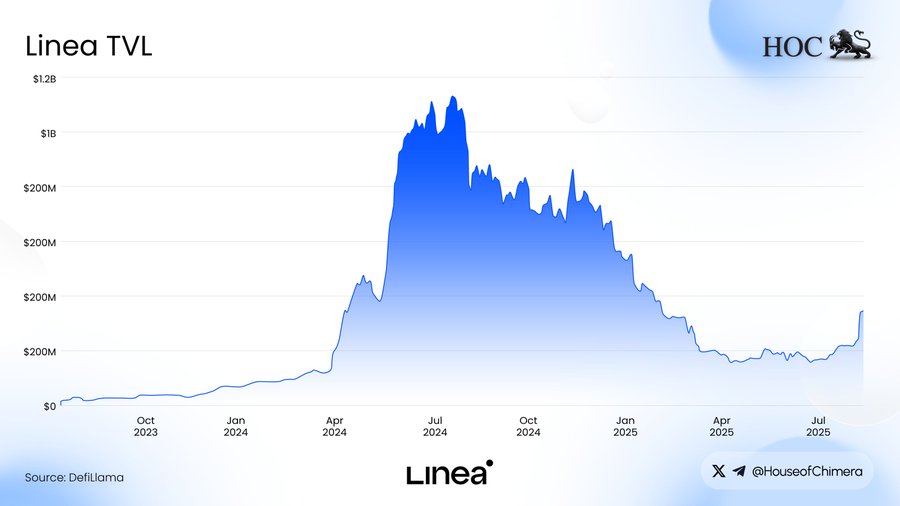Linea positions itself as "an Ethereum Layer 2 network born to enhance Ethereum." The mission seems simple yet powerful. With Ethereum's price rebounding significantly over the past two months and nearing new highs, Linea has quickly become one of the most anticipated projects in the crypto space, especially with its Token Generation Event (TGE) approaching.

Essentially, Linea is not just another Layer 2 network—it is a zkEVM project designed to push Ethereum further while fully integrating with the Ethereum ecosystem. It was founded by ConsenSys, the company behind key Ethereum infrastructure like MetaMask and Infura. With deep institutional support and years of experience, it backs core tools used by over 30 million users globally. Led by Ethereum co-founder Joseph Lubin, ConsenSys has raised $725 million from institutions like Microsoft, SoftBank, and Coinbase Ventures, providing a solid foundation for Linea's long-term development.
Linea's Technology and Ethereum's Challenges
The core challenge of Ethereum has always been scalability. Competing chains like Solana excel in speed and throughput, forcing Ethereum to rely on Rollups for scaling. The principle of Rollups is to bundle a large number of Layer 2 transactions and submit them to Ethereum for settlement, with two methods: one is optimistic fraud proofs (which require up to 7 days for final confirmation), and the other is validity proofs (also known as ZK proofs), which are faster and more secure.
Linea adopts Type 2 zkEVM, meaning it is fully equivalent to EVM but not entirely equivalent to Ethereum. In practical applications, this allows developers to deploy Ethereum dApps directly on Linea without rewriting code, while enjoying faster proof generation and lower costs. Linea aims to gradually transition to Type 1 zkEVM by 2026, achieving perfect compatibility with Ethereum.

Reducing Costs and Enhancing User Experience
Linea has already demonstrated its ability to enhance user experience, most notably by significantly reducing Gas fees. In the Alpha V2 upgrade, it introduced a mechanism to aggregate multiple batches into a single proof, thereby lowering fixed costs and reducing average Gas fees by 66%. This makes Linea one of the Layer 2 solutions with the lowest transaction costs, establishing an advantage for attracting and retaining users.
Core Features Driving Adoption
Linea's design revolves around three main pillars:
- Ethereum Alignment—using ETH to pay Gas fees to maintain consistency with Ethereum's native design;
- Native Yield—introducing token economic incentives at the network level;
- Multi-Rollup Network Architecture—building an ecosystem through the interconnection of different Rollups.
At the same time, Linea employs a dual-burning mechanism: the ETH fees used in transactions will simultaneously burn both ETH and LINEA tokens. This mechanism tightly binds Linea's success to the health of Ethereum.

Native Yield Mechanism and Ecosystem Flywheel
Another significant differentiator for Linea is its native yield mechanism. By integrating with Lido, ETH bridged to Linea can be automatically staked, and the generated yield will flow back into the ecosystem to support liquidity and incentivize growth. This design creates a liquidity flywheel effect, which is expected to support Linea's long-term development and avoid the boom-and-bust cycles seen in other projects driven by short-term incentives.
Linea not only positions itself as a Layer 2 network but also provides a complete set of tools through Linea Stack to help other projects build their own Rollups. This strategy is similar to Optimism's Superchain approach, aiming to create broader network effects, ensure interoperability, and enhance the cohesion of the entire ecosystem.
Ecosystem Momentum and Token Economics
Linea's ecosystem is rapidly accumulating momentum. It has established connections with over 400 partners across DeFi, NFTs, infrastructure, and AI, including heavyweight protocols like Aave, PancakeSwap, SushiSwap, and Stargate. During the Surge event in 2024, its Total Value Locked (TVL) reached $1.2 billion at one point. Although there was a decline after the incentives ended, funds are flowing back as the TGE approaches. The decentralized exchange Etherex, which launched just weeks ago, has already surpassed a TVL of $120 million, indicating that ecosystem capital is warming up.
Unlike many projects, Linea deliberately avoids allocating tokens to venture capital firms. Instead, it allocates 85% of the tokens to the ecosystem, with only 15% reserved for ConsenSys, which has a five-year lock-up period. In terms of governance, Linea intentionally excludes token governance, with the Linea Consortium, composed of trusted Ethereum organizations, managing token emissions, grants, and incentives. This design reduces regulatory risks and ensures a high degree of alignment with Linea's long-term vision for Ethereum.

Future Outlook
According to the roadmap, Linea will launch a series of key upgrades in the third and fourth quarters of 2025, including a new burning mechanism, an increase in Gas limits, and the full implementation of the native yield mechanism. By 2026, Linea plans to achieve Type 1 zkEVM and increase network throughput to 5,000 transactions per second (TPS), while advancing more ambitious real-time proofs for Ethereum.
Conclusion
Linea is a bold experiment: without VC backing, with ETH native yield, and Ethereum-first design, it is more than just a scaling solution. Although there are still questions about its token model and long-term value capture, one thing is certain as the TGE approaches—Linea's goal is not just to scale Ethereum, but to strengthen it.
免责声明:本文章仅代表作者个人观点,不代表本平台的立场和观点。本文章仅供信息分享,不构成对任何人的任何投资建议。用户与作者之间的任何争议,与本平台无关。如网页中刊载的文章或图片涉及侵权,请提供相关的权利证明和身份证明发送邮件到support@aicoin.com,本平台相关工作人员将会进行核查。




